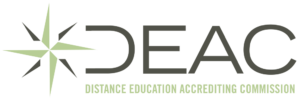As a teacher, your personal growth directly impacts your ability to inspire and guide your students. A personal growth plan can help you identify your goals, track your progress, and stay motivated throughout your career. Here’s a step-by-step guide to help you develop a personalized plan.
What is a personal growth plan for teachers?
A personal growth plan for teachers is a structured approach to professional development that focuses on enhancing their skills, knowledge, and teaching effectiveness. It typically involves setting specific, measurable goals tailored to the teacher’s individual needs and aspirations.
This plan may include activities such as attending workshops, pursuing further education, collaborating with colleagues, or engaging in self-reflection. By regularly evaluating progress and adjusting goals, teachers can foster continuous improvement in their practice, ultimately benefiting their students and the learning environment.
How to Write a Professional Development Plan
Creating a personal growth plan as a teacher begins with understanding the power of goal setting.
You can develop a Personal Growth Plan in 5 steps:
1. Conduct a Self-Assessment
2. Set SMART Goals
3. Develop Action Steps
4. Seek Support
5. Monitor Progress & Adjust as Needed
1. Self-Assessment
- Reflect on your strengths: What are you good at? What do you enjoy about teaching?
- Identify areas for improvement: Are there specific skills or knowledge you’d like to develop?
- Consider feedback: What have students, colleagues, or administrators said about your teaching?
2. Set SMART Goals
SMART goals are designed to provide clarity and direction by ensuring that objectives are Specific, Measurable, Achievable, Relevant, and Time-bound. This approach helps individuals effectively track their progress and stay motivated while working toward their desired outcomes.
- Specific: Clearly define what you want to achieve.
- Measurable: How will you know if you’ve reached your goal?
- Achievable: Set practical and achievable goals based on your abilities and available resources.
- Relevant: Make sure your goals support your broader career ambitions.
- Time-bound: Set a timeframe to maintain accountability.
3. Develop Action Steps
- Break down your goals: Divide larger goals into smaller, manageable steps.
- Create a timeline: Set a timeline for each task and step you will take.
- Identify resources: What do you need to achieve your goals (e.g., books, learning materials, mentors)?
4. Seek Support
- Find a mentor: A mentor can offer guidance, support, and feedback.
- Join a professional learning community: Collaborate with other educators to share ideas and experiences by joining professional learning communities.
- Track your progress: Regularly review your personal growth plan and make adjustments as needed.
Read more: Benefits of Teacher Collaboration
5. Monitor Progress & Adjust as Needed
- Acknowledge your successes: Regularly review your progress against your goals. Reward yourself for reaching your goals.
- Reflect on your journey: Reflect on what’s working and what’s not, and be open to making adjustments to your plan to ensure it remains relevant and effective.
What is an example of a personal goal as a teacher?
One example of a personal goal a teacher might set is to enhance their classroom management skills. This could involve exploring classroom strategies to create a more positive and structured learning environment. The teacher might plan to attend a workshop on classroom management techniques, implement new strategies over the course of a semester, and seek feedback from peers and students.
By reflecting on the effectiveness of these strategies and making necessary adjustments, the teacher can foster a more respectful and productive classroom atmosphere, ultimately leading to improved student behavior and engagement.
Conclusion
Creating a personal growth plan as a teacher is an invaluable step toward enhancing your skills and positively impacting your students. By reflecting on your strengths, setting clear goals, and regularly monitoring your progress, you can foster continuous improvement in your teaching practice. Embracing this journey not only benefits your professional development but also enriches the learning experiences of your students.
Remember, the journey of professional growth is ongoing, and there’s always room for improvement. If you’re looking for additional resources and support in your educational journey, consider exploring various courses offered at Acacia University’s School of Education. Discover how you can further your teaching career and make a difference today.













